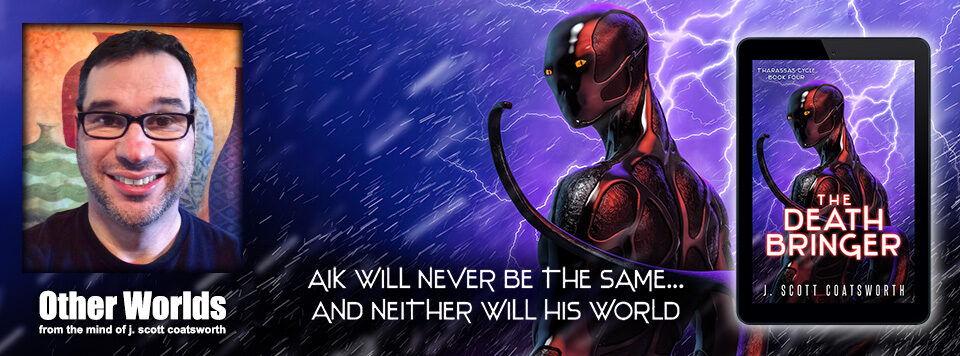
Today I thought I’d take you behind the scenes, to give you a sort of how the sausage is made look at my writing.
Writing styles are constantly changing. Take a look back at the classics you read in high school – would any of those be published (without drastic revisions) today? Even the way we write fiction now, with all its accepted “traditions,” is very different than what folks wrote a couple decades ago.
Take the common “said” dialogue tag. In the past, it was sprinkled liberally throughout manuscripts, and was considered to be invisible to the reader. It was so common that at one point readers truly read right past it. But just like TV’s dreaded laugh track, its overuse now stands out like the proverbial sore thumb.
As I have perfected my craft (and I say that like its a done deal, but in fact it is always evolving), I’ve learned how to make it flow smoothly, conveying important information about scene and mood and character (without too much data dumping), while making it easy on the eye of the reader.
So if you were to analyze my writing, you’d find:
- Paragraph lengths (and sentence lengths) vary, giving a pleasing rhythm to the reader, so that the writing doesn’t come across as pedantic.
- Dialogue tags (including the reviled “said” mentioned above) are rarely used, except for the occasional, more descriptive tag (he screamed; she growled; they muttered). Instead, I use action tags that serve a double purpose: they tell you who just spoke, and give you an additional visual of the action in the scene.
- I minimize the use of italics, em dashes—and elipses… although it may not seem like it. The number of these that makes the final draft is usually about a third of what was there originally.
- You will never find a semi-colon, and only very rarely a colon, in any of my works. I hate them. Passionately.
- Descriptions and inner thoughts are peppered in on a regular basis to keep you connected to the character and the world around them, but (hopefully) slipped in naturally and unobtrusively.
So does it all just funnel out of my writer brain and down through my fingers like that, perfect from the first draft?
Hell no. My initial drafts tell a complete story, sure, but the creation of the second, third (and sometimes fourth) drafts is a delicate process of sanding down and refining that story, so that when it’s done, it flows like a smooth wine.
Each of us learns how to write in our own way, and over time, every writer develops a certain style. It can be very hard to change that style radically – and why would you want to? It’s what makes your writing your own, and not someone else’s.
But it’s also important to make your style accessible to your readers, and that often means learning to merge your style with today’s predominant writing styles. This is where editors and beta readers shine, helping take your lumpy story and mold it into something sleek and beautiful.
My own current style is the product of the many books I have written, and of working with editors and beta readers to smooth out the rough edges.
My current bugaboo? Overusing character names. My editor for the Tharassas Cycle pointed this one out—every three paragraphs or so, I refer to the POV character by name, instead of trusting the reader to remember whose head they are riding in. So my mission is to remember not to overuse names, instead allowing you, my dear reader, to keep track of who they are.
The struggle is real.
So I keep at it, and hopefully one day I’ll be the perfect writer.
Until the styles change again.
To my writer friends, has your writing style changed to accommodate the current trends? How? Or are you more of an anarchist? 🙂
